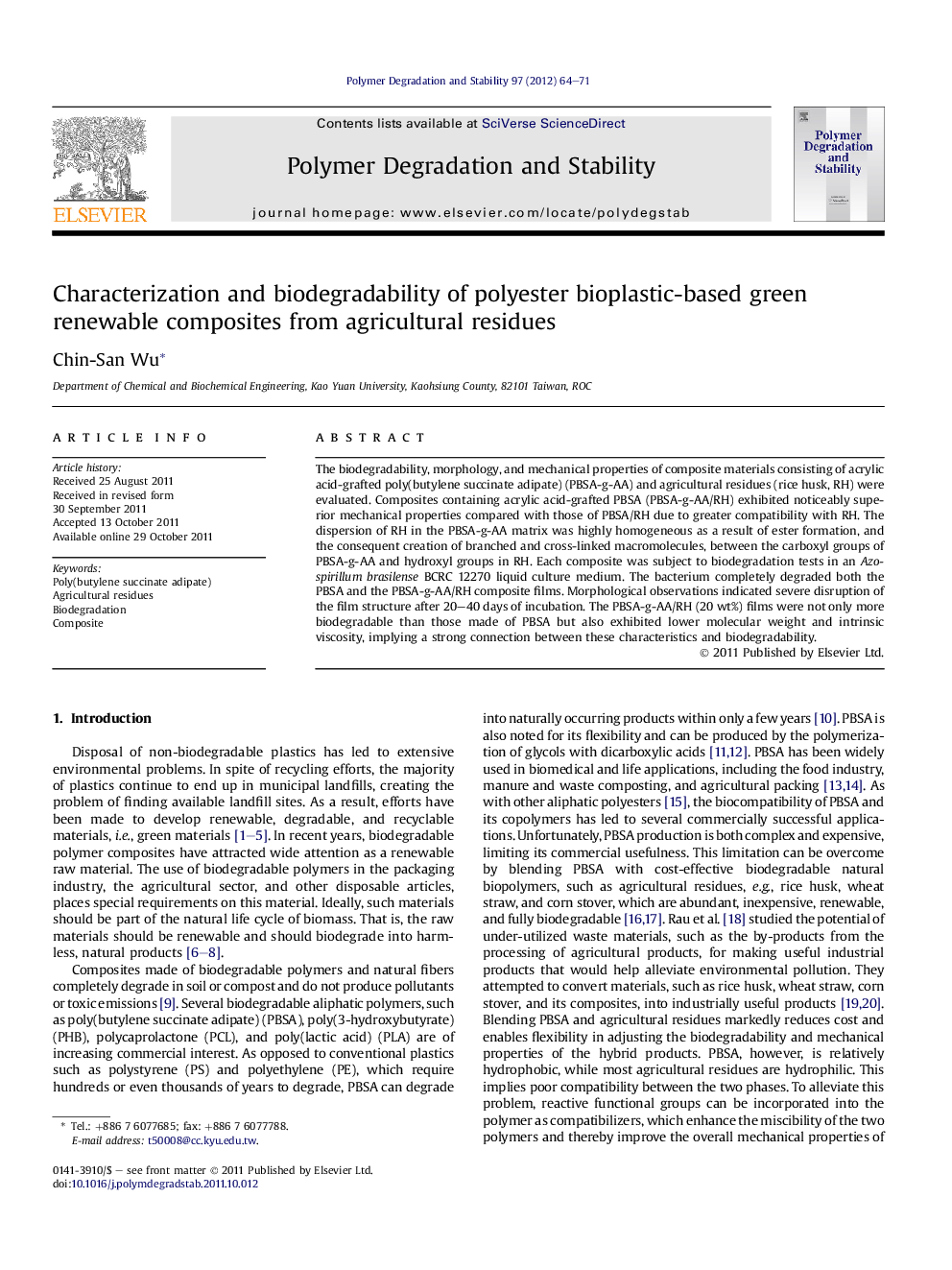| Article ID | Journal | Published Year | Pages | File Type |
|---|---|---|---|---|
| 5202372 | Polymer Degradation and Stability | 2012 | 8 Pages |
Abstract
The biodegradability, morphology, and mechanical properties of composite materials consisting of acrylic acid-grafted poly(butylene succinate adipate) (PBSA-g-AA) and agricultural residues (rice husk, RH) were evaluated. Composites containing acrylic acid-grafted PBSA (PBSA-g-AA/RH) exhibited noticeably superior mechanical properties compared with those of PBSA/RH due to greater compatibility with RH. The dispersion of RH in the PBSA-g-AA matrix was highly homogeneous as a result of ester formation, and the consequent creation of branched and cross-linked macromolecules, between the carboxyl groups of PBSA-g-AA and hydroxyl groups in RH. Each composite was subject to biodegradation tests in an Azospirillum brasilense BCRC 12270 liquid culture medium. The bacterium completely degraded both the PBSA and the PBSA-g-AA/RH composite films. Morphological observations indicated severe disruption of the film structure after 20-40 days of incubation. The PBSA-g-AA/RH (20Â wt%) films were not only more biodegradable than those made of PBSA but also exhibited lower molecular weight and intrinsic viscosity, implying a strong connection between these characteristics and biodegradability.
Related Topics
Physical Sciences and Engineering
Chemistry
Organic Chemistry
Authors
Chin-San Wu,
